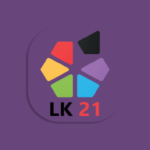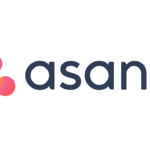In the ever-evolving world of education, integrating technology into classrooms and learning environments has transformed the way students engage with knowledge. Among the numerous digital tools available, PebbleGo stands out as a trusted and impactful resource designed for young learners in grades K-3. This comprehensive guide will take you through what PebbleGo is, its features, benefits, and why educators and parents alike are embracing it as an essential part of early learning.
What is PebbleGo?
PebbleGo is an award-winning digital database specifically designed to provide young students with age-appropriate, curriculum-based content. Developed by Capstone, a leading publisher of children’s educational content, PebbleGo offers engaging multimedia articles, activities, and resources to help students develop research and literacy skills. With a user-friendly interface, interactive features, and visually appealing content, PebbleGo encourages students to explore topics independently while building their foundational knowledge.
The platform covers a variety of core subjects, including:
- Animals
- Science
- Biographies
- Social Studies
- Health
Each topic is carefully curated to align with educational standards, making it a valuable tool for both classroom instruction and at-home learning.
Core Features of PebbleGo
PebbleGo is known for its rich and interactive features that cater to the learning needs of young students. Here are some of its core features that set it apart from other educational tools:
1. Age-Appropriate Content
- PebbleGo ensures that the information provided is accessible to early learners. The articles are written in simple language with short sentences, making it easier for students to comprehend complex topics.
2. Read-Aloud Functionality
- One of PebbleGo’s most notable features is its read-aloud option, where professional voiceovers read the articles aloud. This feature is particularly beneficial for emerging readers and students with learning disabilities.
3. Interactive Media
- The platform includes videos, images, and audio clips that enrich the learning experience. Students can watch short video clips related to topics, listen to animal sounds, or view high-quality images that enhance their understanding.
4. Embedded Activities and Quizzes
- To reinforce learning, PebbleGo offers interactive activities and quizzes that help students test their knowledge. These activities can also serve as formative assessments for teachers.
5. Citation Tools and Research Support
- The platform provides built-in citation tools, making it easier for students to learn about proper attribution and research practices from an early age.
6. Multilingual Support
- PebbleGo offers content in English and Spanish, promoting bilingual learning and accommodating students from diverse linguistic backgrounds.
Subjects and Topics Covered on PebbleGo
PebbleGo’s extensive library is organized into different databases, each covering specific subjects. Here is a detailed look at the main categories available on the platform:
1. Animals
- One of the most popular sections among young learners, the Animals database features information about various species, habitats, ecosystems, and life cycles. Students can explore categories such as mammals, reptiles, amphibians, birds, and insects.
2. Science
- The Science database covers essential topics, including Earth science, physical science, life science, and space exploration. Students can learn about the water cycle, ecosystems, weather, and planets in an engaging and simplified manner.
3. Biographies
- This section introduces students to influential figures from history and contemporary times, including scientists, leaders, athletes, artists, and social reformers. The biographies are designed to inspire young minds while teaching them about important contributions to society.
4. Social Studies
- Covering topics such as communities, government, geography, and historical events, the Social Studies database helps students understand the world around them. It introduces concepts like citizenship, cultural diversity, and historical timelines.
5. Health
- The Health section focuses on topics related to physical and mental well-being, nutrition, safety, and hygiene. Through engaging content, students learn about the importance of healthy habits, body systems, and personal care.
Benefits of PebbleGo for Students
PebbleGo offers numerous benefits for young learners, making it an indispensable tool in modern education:
1. Encourages Independent Learning
- The platform’s intuitive design and engaging content enable students to explore topics independently, fostering curiosity and a love for learning.
2. Supports Reading Development
- With its read-aloud functionality and simple language, PebbleGo is ideal for early readers and students who need additional reading support.
3. Enhances Research Skills
- PebbleGo introduces students to the basics of research by teaching them how to navigate information, cite sources, and answer questions based on what they’ve learned.
4. Multisensory Learning Experience
- The combination of text, images, audio, and video caters to different learning styles, ensuring that students with varying abilities can benefit.
5. Promotes Critical Thinking
- Through quizzes and activities, students are encouraged to think critically, analyze information, and apply their knowledge to solve problems.
Benefits of PebbleGo for Educators
PebbleGo is not just a student-friendly resource; it also provides valuable support for teachers and educators:
1. Aligned with Educational Standards
- The content on PebbleGo is aligned with state and national educational standards, making it easy for teachers to integrate it into their lesson plans.
2. Time-Saving Resource
- Teachers can save time by using pre-designed activities, lesson plans, and assessments available on the platform.
3. Differentiated Learning
- The platform accommodates students with different learning needs by offering content at varying difficulty levels and supporting both individual and group learning.
4. Data and Reporting Tools
- Teachers can track student progress and identify areas where additional support may be needed through built-in assessment tools.
How to Use PebbleGo Effectively
To maximize the benefits of PebbleGo, both students and educators can follow these best practices:
1. Explore Topics Based on Student Interests
- Encourage students to explore topics they are naturally curious about. This approach can increase engagement and motivation.
2. Integrate PebbleGo into Lesson Plans
- Teachers can use PebbleGo’s articles as supplemental resources during lessons or assign specific topics for independent research.
3. Utilize Quizzes and Activities
- Use the platform’s built-in quizzes to assess comprehension and reinforce learning objectives.
4. Foster Collaborative Learning
- Assign group projects where students can collaborate, discuss, and present their findings using PebbleGo’s resources.
5. Promote Bilingual Learning
- For classrooms with diverse linguistic backgrounds, make use of the platform’s Spanish-language content to support bilingual education.
PebbleGo for Parents: Supporting At-Home Learning
Parents can also leverage PebbleGo to enhance their children’s learning outside of the classroom:
1. Encouraging Curiosity at Home
- Allow children to choose topics of interest and explore them together, fostering a love for learning beyond school.
2. Reading Practice
- The read-aloud feature is perfect for reading practice at home, helping young learners improve their fluency and comprehension.
3. Supplementing Homework
- Parents can use PebbleGo to help their children complete homework assignments, conduct research, and clarify concepts.
Challenges and Limitations of PebbleGo
While PebbleGo offers numerous benefits, there are a few limitations to consider:
1. Limited Content for Older Students
- The platform is primarily designed for grades K-3, which means older students may find the content too simplistic.
2. Internet Dependency
- Since PebbleGo is a digital platform, it requires an internet connection, which may be a barrier for students without reliable access.
3. Subscription Costs
- While many schools provide access, some parents may find individual subscriptions costly.
The Future of Digital Learning Tools Like PebbleGo
As digital learning continues to evolve, platforms like PebbleGo are expected to expand and innovate further. Here are some trends that could shape its future:
1. Integration with Virtual Reality (VR)
- Future updates could incorporate VR experiences, allowing students to explore topics like space and ecosystems more immersively.
2. AI-Powered Personalization
- AI could be used to personalize content recommendations based on each student’s learning pace and preferences.
3. Expanded Multilingual Support
- PebbleGo’s may introduce additional languages to support multilingual classrooms and global learners.
4. Gamification of Learning
- Adding gamified elements, such as badges and rewards, could further enhance student engagement and motivation.
Conclusion
PebbleGo’s is a powerful educational tool that has revolutionized early learning by combining technology with engaging, age-appropriate content. Its ability to cater to different learning styles, promote independent exploration, and support teachers in the classroom has made it an invaluable resource. As digital education continues to advance, PebbleGo is well-positioned to remain a staple in early learning environments, nurturing the next generation of curious, confident learners.
FAQs
1. What is PebbleGo used for?
PebbleGo is used to provide young students with engaging, curriculum-based content to develop research, reading, and critical thinking skills.
2. Is PebbleGo free to use?
PebbleGo typically requires a subscription, but many schools offer free access to students as part of their educational programs.
3. What age group is PebbleGo suitable for?
PebbleGo is designed for students in grades K-3, making it ideal for early learners.
4. Can PebbleGo be accessed at home?
Yes, students can access PebbleGo from home if their school provides login credentials or if parents have a subscription.
5. What subjects does PebbleGo cover?
PebbleGo covers subjects such as animals, science, biographies, social studies, and health, with interactive content and quizzes.
6. Does PebbleGo offer content in other languages?
Yes, PebbleGo offers content in English and Spanish, supporting bilingual education and diverse learning needs.







